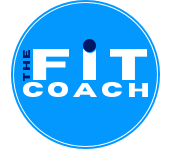This website uses cookies so that we can provide you with the best user experience possible. Cookie information is stored in your browser and performs functions such as recognising you when you return to our website and helping our team to understand which sections of the website you find most interesting and useful. Please refer to our Privacy Policy.

Jump-Start Your Fitness: Prioritising Competence for Improved Confidence
Embarking on a fitness journey can be both exciting and daunting – especially if you have taken the additional steps of joining a gym.
In turn, I often reinforce to beginners, that while your goals and needs have pushed you to join a gym or exercise at home, such goals (i.e. posture, weight loss, strength) offer little in regards to motivation in the long-term.
Irrespective of where you may train, I will forever recommend (for a few weeks at least) you shift attention instead to developing competency in the exercises you perform and ‘movement efficiency’, while also narrowing your attention to a small number of exercises to help prevent overwhelm.
As an example – for my ‘FitStart’ programme, the goal is to introduce seventeen exercises over an extended period. However, for the first three sessions, you are initially introduced to eight. After which, additional exercises are introduced at staggered intervals to accommodate learning.
I believe this approach helps to increase motivation through improved competence, and confidence in your ability to exercise effectively.
Experience aside, learning how to exercise may be the number one challenge to set yourself. This helps to address common anxieties and negative internal dialogue such as ‘I can’t’, too ‘How can I make this better?’
Importantly, the goal is never perfection; especially as this has been described as the ‘Enemy of progress. By contrast, the ‘1% Rule’ instils a mindset of subtle, incremental, and consistent tweaks with every session. Doing so, also proves progression and improvements occur more often than one might think.
The Cambridge Dictionary defines confidence as ‘The quality of being certain of your abilities and to do things well’, and ‘A feeling of having little doubt about yourself and your abilities‘.
Increasing your competence therefore, is key to building confidence; so setting time aside to learn the practicalities and skills related to exercising with good form, and technique, will develop your beliefs and motivation over the coming weeks.
Establishing a realistic routine is key to your longterm goals; so setting time aside in your calendar and reminders, setting notifications, and creating regimes for your training days can help to streamline the process.
We need to eliminate distractions and excuses to avoid or forget a training session, To help – ensure you are eating energy rich food, prepping training gear, and where possible arranging to train with a workout buddy and switching off unnecessary notifications.
As a challenge: list what problems, hurdles or distractions may crop up, and create the steps you need to ensure you get to the gym or train at home.
Motivation gives you the get-up-and-go to push on, especially when life decides to throw hurdles and distractions your way. However, motivation can be fleeting – so it’s important to cultivate it regularly.
Find your motivation by revisiting your reasons for exercising, whether it’s improving your health, boosting your mood, or increasing your energy levels – consider the physical, emotional changes by asking ‘How do I want to feel’, ‘How do I want to look’, and “What do I want to be capable of’?
Setting short-term goals are also important, as is celebrating any milestones along the way. To help, record each training session in a journal or fitness app. Noting improvements in intensity, recovery, weight lifted, distance covered, and volume of reps or sets performed. All serve as reminder of your efforts and progression.
A Final Word
Dedicating your first month to learn the fundamentals of exercise is key to developing competence, confidence and motivation. This allows to temporarily set aside you longterm goals, while creating and achieving a number of short-term challenges which motivate you to be more consistent with your training.
This will help to lay a solid foundation for long-term success in your fitness journey.

